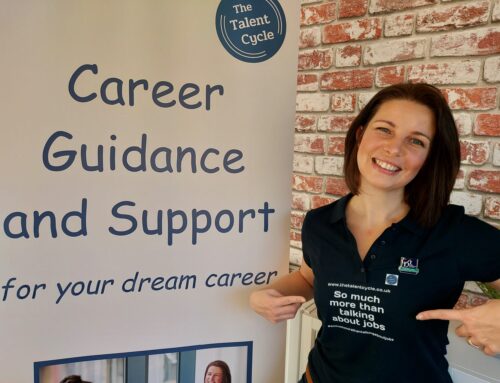What will the ‘new normal’ look like come September? Or even this time next year? Will careers leaders throughout the land still be arranging network meetings via Zoom, or recording lessons for use on the school VLE or teaching platform? Or will things be back to how they were in February 2020? Will real life careers fairs and visits to employers be back on the programme again?

In all honesty, I don’t know, you don’t know, nobody knows. All we can do is guess and make plans that can be adapted to fit in with the prevailing situation. One thing I can be pretty sure of is that the use of virtual platforms for guidance, CPD and networking will be used far more frequently than they once were.
In the months since we all found ourselves in lockdown and schools were closed, everyone who works in or for a school has been on a steep learning curve. So, let’s pat ourselves on the back for all we’ve done and think about what challenges September might bring. Here are my top three.
Challenge One: Pressure to ‘make up for lost time’
Sadly, it’s unlikely to be making up for lost time in guidance interviews or careers learning. As careers lead, you’re more likely to face even tougher opposition to requests to take pupils out of lessons. Maybe even the days allocated for careers drop down days will be removed from the school calendar. What can you do?
The key thing to remember is that you are the school expert in CEIAG. It’s your job to ‘manage upwards’ by supporting your line manager to understand the needs and requirements of the CEIAG curriculum and offer. Careers guidance can’t be put on the back burner. It supports students of all ages to understand the value of the work they do in school, increasing their motivation and thus, their grades. So it is your job to find evidence to back up your needs to deliver an excellent CEIAG offer and use it to convince your line manager to support you.
Research recently published by ICeGS’ Siobhan Neary and Jill Hanson has found significant evidence that improved CEIAG provision and working towards meeting the Gatsby Benchmarks improves engagement, noting that in some schools, pupils no longer asked the ubiquitous “Miss why do we have to learn this?” question. This is, because of their understanding of the purpose of education, they knew the answer; or knew that it would become apparent during the lesson. I’ll leave you to read the research but the key point for SLT is that a higher number of A and B grades were reported in schools with good CEIAG. The research also reported higher aspirations, and students making better informed decisions thus improving destination data.
Challenge Two: Not being able to visit workplaces or educational sites and/or have visitors on the school site
Depending on how things develop, we may well find that the ‘new normal’ includes many more ‘virtual encounters’. Lots of organisations have started offering online materials. Universities, colleges, apprenticeship providers and large employers are all starting to provide either prerecorded briefings that can be watched at any time, or webinars at set times. The latter are often recorded and available afterwards for those unable to attend but they offer the opportunity to ask questions.
A key question will be how can we tell if the virtual encounters count towards a student’s Gatsby entitlement? There’s a simple answer to that, the Careers and Enterprise Company have released guidance to support you when recording encounters. This guidance will also help you to ascertain the relevance of opportunities to your young people.
The range of resources continues to expand, and even virtual internships and work experience are starting to be offered, so keep up with your local network or sign up to my weekly newsletter that always includes a good number of CPD and pupil resources to keep abreast of developments.
Challenge Three: Critically evaluating your careers programme/scheme of work
Most of us look at our school CEIAG programme at the end of each year and reflect on WWW (what went well) and EBI (even better ideas). This year we need to add WWWBNT (what went well but needs tweaking).
My advice is don’t reinvent the wheel, use whatever contacts you have, local networks, careers leader fora, (the CDI CL forum is free to non-members until September) your careers hub, your enterprise adviser. Use them as soundboards for ideas, work together, share resources. Do what you have to do to provide the best possible provision you can.
Let’s not lose sight of our main priority
As careers leaders, teachers, careers professionals or just as people, many of us want to make a difference. We want to make the world a better place if we can. Our students will be entering the labour market during what is expected to be one of the worst recessions in living memory, students will need to be able to look critically at the employment market, assess opportunities and make well-informed choices. Careers is the part of education that gives students these skills, arming them with knowledge about work, future study and training routes.
Janet is a teacher with over 15 years experience providing award winning careers education and 25 successful years teaching business studies in schools and colleges throughout London. She adopted her tongue-in-cheek Twitter name, @CareersDefender, after a particularly hard time convincing her school’s Senior Leadership Team of the value of careers education; something she passionately believes in.





